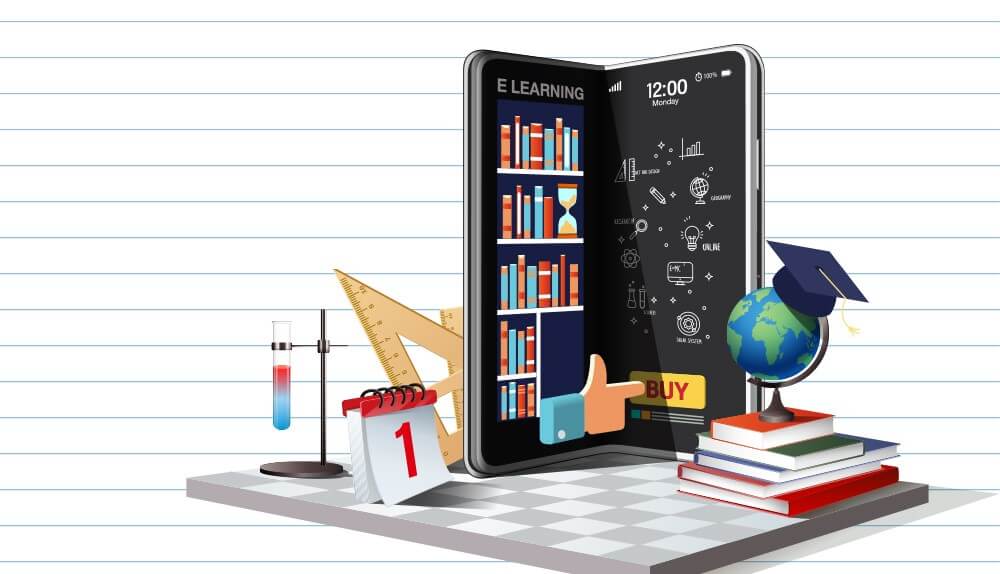The digitally native generation is that way due to technology; hence, education is enhanced through collaborative learning, real-time feedback, and personalisation. Digital tools enable students to go beyond classroom walls, enabling them to engage more fully in subjects and connect with peers and teachers. To meet these students’ academic needs and ensure a successful future in meeting global challenges, institutions and educators need to develop policies that foster curiosity, critical thinking, and digital literacy.
Currently, the volume and nature of educational opportunities are evolving at a rapid pace. Within these digital frameworks lies multifaceted richness, as they provide innovative channels to experience learning beyond traditional settings. The surge of online schooling is an additional provision tailored to students and offers even more personalised educational opportunities. Various schools in Texas have strategically embraced this transformation, where forward-thinking learning experiences are being crafted to prepare students aptly for navigating the complexities of a digital world. It is imperative that all stakeholders, including educators, parents, and students, understand everything that comes with the educational digital shift and strive to adapt to this change as they utilize and benefit from these advancements.
The new technologies present both an opportunity and an interesting challenge of keeping students interested within a fully online classroom: how fully engaged students are matters greatly in authentic learning, especially regarding how we prepare students who are natives in the digital world for their future careers and ensure that they can thrive in a productive career. Through the use of modern tools and teaching strategies, educators are able to design content that can further capture the interests of students and that they will therefore want to interact with. The learning is provided in an interactive, flexible manner that allows students to choose according to their preferences and pace. Such flexibility offered by the technological tools available is not only beneficial but also educationally transformational.
Understanding the Digital Classroom
The digital classroom is a transformative space, representing an evolution far beyond the confines of traditional educational models. Within this virtual environment, learners are able to examine multiple topics with the aid of numerous digital resources that enhance participation and teamwork. Video conferencing, learning management systems, and other interactive software are now essential in these settings, not just for teaching but also for student-teacher interaction and collaboration. These technologies assist in the removal of distance barriers, providing the opportunity to learn in a borderless classroom. These tools, designed to support all learner categories, enable educators to provide opportunities for every student to succeed irrespective of physical geography.
Strategies for Student Engagement Online
Engaging students in a digital space is a complex endeavour that requires creativity, foresight, and technological skills. Teachers can utilize videos, interactive simulations, and even game-like assessments to capture a student’s active interest. These elements increase the richness of the learning experience, catering to different learning preferences, be they visual, auditory, or tactile-kinesthetic. In addition, encouraging prompt and organised feedback is another pillar of practical education in the digital realm. Feedback helps preserve the critical link between students and teachers, as interactions in a digital setting require feedback as promptly as in-person contact. Through constructive feedback, teachers help learners become active participants instead of passive audience members, which cultivates an inquisitive attitude that drives further inquiry.
Success Stories in Digital Learning
The myriad of educational institutions around the globe that have transformed into success stories in digital learning provide a template for others to follow. Those schools that superbly balance levels of student participation and tailor their methods to fit the various ways in which students learn routinely improve educational performance. Consider the advanced schools that offer gamified learning experiences. Such experiences not only foster motivation but also help in developing critical and analytical skills in students. Such schools foster an optimal learning environment by combining educational content with games and equipping students with the ability to face the myriad challenges of the modern world in a practical, hands-on manner rather than just learning the theories in class.
The Crucial Role of Teachers in a Digital World
Through all their experiences in digital education, teachers remain the most critical factor. As a professional educator, their instruction and mentorship role has expanded to include the skilled application of technology and digital pedagogy suited for an e-learning environment. This role requires perpetual learning, since every new space requires new forms of teaching and interaction. There is no doubt that these programs play a significant role in their context because they prepare teachers for proper functioning and effective teaching in the digital world. The teachers managed to use the challenges of the shift to digital teaching to motivate and support students in their transformation into learners of 21st-century education.
Challenges and Solutions in Digital Education
One of the main challenges that e-learning faces is phenomena such as screen fatigue, lack of internet availability, and the digital divide. Educators must proactively address these issues by setting clear expectations, encouraging regular breaks, and utilizing an integrated blend of online and offline resources. SSuch an approach helps to improve the health of educational atmospheres and inclusivity. Other innovative solutions include providing content that can be accessed while offline and packaged in a way that students of all backgrounds can take advantage of.
Preparing Students for a Digital Future
The implementation of online classes, coupled with the sophisticated technological gadgets students possess, automates much of the instructional assignments. With minimal supervision from the monitors of television sets or projectors, students can omit the work, provided they have basic internet connectivity. This advantage comes without any associated costs.
Resources and Research on Effective Online Learning
Scheduling work for MASC 500 is challenging, particularly with the lectures being so ethnocentric. It implies additional tasks when considering dependency on distance learning. The absolute modern cons come in the form of LAS systems being brought into the mix of BLENDED LEARNING, quite the paradox that would first collide cyber environments with actual lectures accompanied by rolling weeks of documentation.
To summarise, the careful implementation of innovative technologies within the education system may nurture its future potential growth. With full collaboration between teachers and learners, the current education system can be realigned to be more inclusive, relevant, and impactful for all, which will benefit future learners as well. The thoughtful application of the current changes in technology will definitely influence the existing and future socio cultural frameworks of learning.



